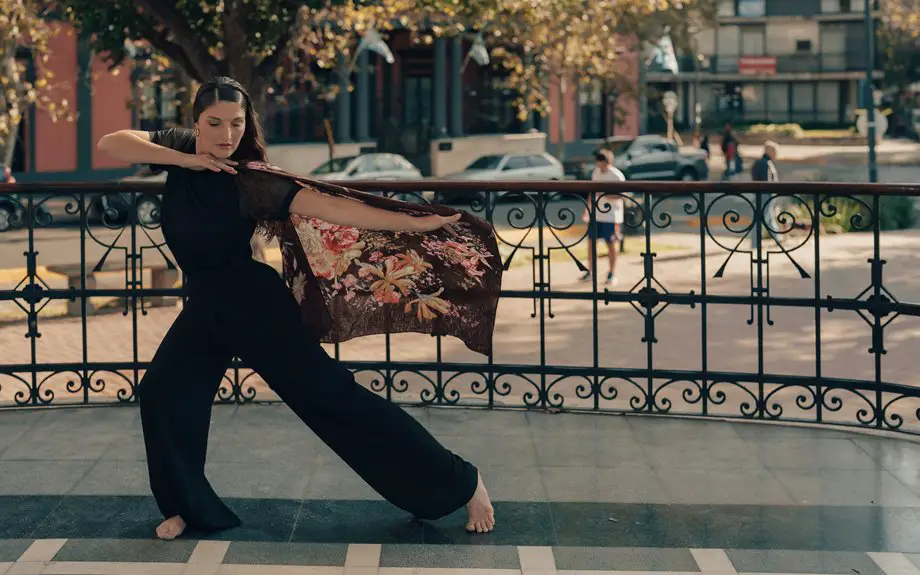You might think 100% cotton is the best choice for comfort, but when it comes to wicking away moisture, it often falls short. Poly-cotton blends combine cotton’s softness with polyester’s ability to pull sweat from your skin. This mix can change how you feel during workouts or hot days. But is a blend really the better option for staying dry and comfortable? Let’s explore what sets these fabrics apart.
Table of Contents
Key Takeaways
- Polyester in poly-cotton blends wicks moisture away from the skin more effectively than 100% cotton.
- Cotton fibers absorb and trap sweat, making 100% cotton less efficient at moisture management.
- Poly-cotton blends balance moisture-wicking with softness, offering better comfort during physical activity.
- 100% cotton breathes well but retains moisture longer, which may cause a damp feeling.
- For active wear, poly-cotton blends typically provide superior moisture control compared to pure cotton.
Understanding Poly-Cotton Blends
Although you might be familiar with cotton fabric, poly-cotton blends combine the best of both worlds by mixing natural cotton fibers with synthetic polyester.
Understanding the fabric composition is key to appreciating these blends. Typically, you’ll find ratios like 65% polyester and 35% cotton, but these can vary.
Grasping fabric ratios, such as 65% polyester and 35% cotton, helps you value poly-cotton blends.
This mix offers several blend advantages. For one, the polyester adds strength and durability, helping the fabric resist wrinkles and shrinkage, while the cotton contributes softness and breathability.
When you choose a poly-cotton blend, you’re getting a fabric that balances comfort with practicality. This combination makes it ideal for everyday wear, providing a smoother feel than pure polyester and better resilience than 100% cotton alone.
Moisture-Wicking Properties of Polyester vs. Cotton
When you’re comparing moisture-wicking properties, polyester often outperforms cotton because it actively pulls sweat away from your skin. Polyester’s low fabric absorbency means it doesn’t hold moisture, reducing moisture retention and keeping you drier. Cotton, on the other hand, has high absorbency, soaking up sweat but holding it close, which can leave you feeling damp.
| Fabric | Moisture Retention | Fabric Absorbency |
|---|---|---|
| Polyester | Low | Low |
| Cotton | High | High |
Since polyester moves moisture to the surface for quick evaporation, it’s better for active wear. Cotton’s absorbency can trap sweat, making it less effective at wicking but often more comfortable for casual use. Understanding these differences helps you pick the right fabric for your needs.
Breathability and Comfort in Different Fabrics
Understanding how fabrics handle moisture sets the stage for considering their breathability and comfort.
Moisture management is key to unlocking fabric breathability and overall comfort.
When you choose between poly-cotton blends and 100% cotton, you’re not just picking a fabric—you’re deciding how your skin will feel throughout the day.
Cotton offers excellent fabric softness, making it gentle and cozy against your skin. It also excels in temperature regulation, allowing air to circulate freely and helping you stay cool.
On the other hand, poly-cotton blends combine polyester’s moisture-wicking with cotton’s softness, but they may slightly reduce breathability. This means while you get durability and quicker drying, you might sacrifice some natural airflow.
Ultimately, your comfort depends on whether you prioritize softness and breathability or enhanced moisture management.
Durability and Maintenance of Poly-Cotton Blends
Since poly-cotton blends combine the strengths of both fibers, they offer enhanced durability compared to pure cotton.
You’ll notice that fabric longevity improves because the polyester component resists wear and tear better than cotton alone. This means your garments can withstand more washes and daily use without losing shape or developing holes quickly.
When it comes to care instructions, poly-cotton blends are also easier to maintain—you can usually machine wash and dry them without worrying about excessive shrinking or wrinkling.
Just follow the label’s guidance, and you’ll keep your clothes looking fresh longer.
Environmental Considerations of Fabric Choices
Although poly-cotton blends offer practical benefits, you should consider their environmental impact before choosing them over 100% cotton.
Cotton, when sustainably sourced, minimizes chemical use and water consumption, making it a greener choice if you prioritize eco-friendliness.
On the other hand, polyester in blends comes from petroleum, a non-renewable resource, which raises concerns about its carbon footprint.
However, some poly-cotton blends now incorporate recycled polyester, improving their sustainability.
When you pick fabrics, also think about recycling options—100% cotton is easier to recycle or compost, while blends can be challenging to separate and process.
Performance of Fabrics in Various Weather Conditions
When you choose between poly-cotton blends and 100% cotton, consider how each fabric performs in different weather conditions.
Fabric performance varies greatly with weather impact. Cotton absorbs moisture well, making it comfortable in dry heat but slow to dry when humid or rainy, which can leave you feeling damp.
Cotton excels in dry heat by absorbing moisture but feels damp when humid or rainy due to slow drying.
On the other hand, poly-cotton blends wick moisture more effectively and dry faster, helping you stay comfortable during humid or wet conditions. However, blends might trap heat more than pure cotton in hot weather, affecting breathability.
In cooler or windy environments, poly-cotton can offer better insulation due to synthetic fibers.
Understanding these differences helps you pick the fabric that suits your local climate, ensuring comfort whether it’s hot, humid, or chilly.
Choosing the Right Fabric for Active and Everyday Wear
Understanding how fabrics respond to different weather sets the stage for choosing the right material for your daily and active wear. When selecting between poly-cotton blends and 100% cotton, consider fabric weight first. Lighter fabrics offer better breathability for workouts, while heavier ones provide comfort for casual use.
Poly-cotton blends often wick moisture more efficiently, keeping you dry during exercise, whereas cotton feels softer and absorbs sweat, ideal for low-intensity activities.
Color options also matter; darker shades may retain heat, while lighter colors reflect sunlight, enhancing comfort outdoors. If you want versatility, poly-cotton blends come in various colors and maintain shape after washing.
Ultimately, balance your activity level, climate, and style preferences to pick fabric weight and colors that suit both active and everyday wear perfectly.
Frequently Asked Questions
Can Poly-Cotton Blends Cause Skin Irritation or Allergies?
Imagine your skin like a delicate flower—polyester sensitivity can cause allergic reactions, making it wilt. If you’ve experienced itching or redness, poly-cotton blends might irritate you more than pure cotton, so choose carefully.
How Do Poly-Cotton Blends Affect Color Retention After Multiple Washes?
You’ll notice poly-cotton blends resist color fading better than pure cotton, thanks to improved wash durability. This means your clothes stay vibrant longer, even after multiple washes, keeping your wardrobe looking fresh and bright.
Are Poly-Cotton Blends Suitable for Sensitive Skin Types?
You’ll find poly-cotton blends offer good skin comfort, but their breathability compares lower than 100% cotton. If you’ve got sensitive skin, cotton’s natural softness might suit you better, reducing irritation risks.
Do Poly-Cotton Blends Dry Faster Than 100% Cotton?
Think of a river flowing swiftly—that’s how poly-cotton blends dry faster than 100% cotton. You’ll notice better breathability comparison and quicker moisture absorption, making your clothes feel fresher and lighter throughout the day.
Can Poly-Cotton Blends Be Used for Formal Clothing?
You can definitely choose poly-cotton blends for formal occasions since they offer durability and wrinkle resistance. When selecting fabric choices, blends provide a polished look while being more practical than 100% cotton for long wear.
- Does Chiffon Fabric Stink - July 15, 2025
- Does Chiffon Fabric Affect the Economy - July 15, 2025
- Does Cotton Fabric Have a Nap - July 15, 2025







